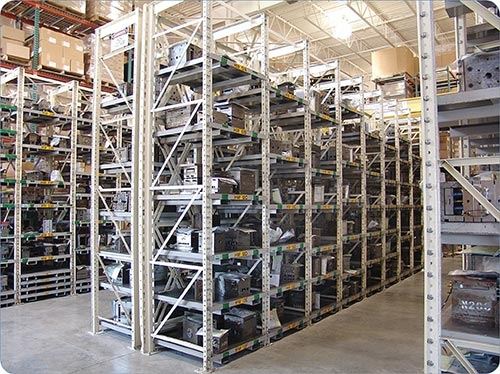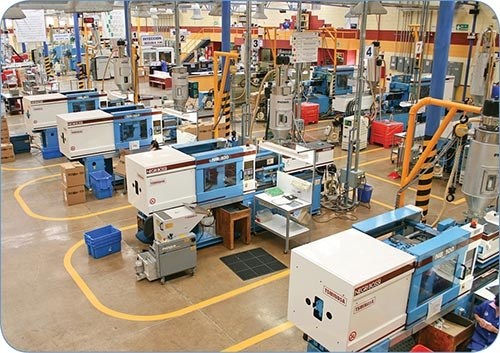Eight Steps Toward a Seamless Mold Transfer
It’s big news when an OEM decides to move a substantial number of molds from one processing operation (either their own in-house/captive facility or an outsourced molder) to another.
It’s big news when an OE M decides to move a substantial number of molds from one processing operation (either their own in-house/captive facility or an outsourced molder) to another. A sizeable program can mean millions of parts and millions of dollars, providing many a custom molder with an enviable base of operations—a long-term contract at tight, but acceptable margins.
There are several reasons for an OEM to transfer production molds from one location to another. Sometimes logistics weigh heavily. Sometimes one custom molder can lure business away from another through price discounts or accepting the burden of inventory management. Sometimes the OEM will have concerns about the financial stability of a source and, in an effort to ensure uninterrupted supply, will switch to a larger molder. And sometimes one of the reasons above is touted to cover up the real reason—the molds are old and scrap is high and the labor rate to ferret out the good from the bad is murder on cost.
The OEM team responsible for moving the molds is thinking in terms of piece-part costs and uninterrupted production. They are moving them to your facility to gain better quality, better pricing, better terms, or better service than what their current molder offers, or they need you to justify the decision to outsource what was once an integrated part of their manufacturing process.
The OEM is likely to be completely unaware of any technical issues and challenges inherent in the program. Only the people who are actually molding the product and have hands-on involvement understand the impact of mold condition, part geometry, resin selection, and quality specifications. Your investment in due diligence at the evaluation phase is essential to your profitable future. Every mold transfer is a challenge—if the program was running automatic in a standard press with little scrap at 40% margin, why would anybody let it go?
Mold transfers—particularly large ones—require upfront planning, communications, and investments to achieve the goals and expectations of the project. There will certainly be unplanned events and discoveries. A complete understanding of the OEM’s goals must be in place at the injection molder taking responsibility for the change in venue. The information and activities required leave no room for anything but complete cooperation and disclosure from both sides.
EIGHT PHASES OF TRANSFER
We have identified eight phases of a transfer:
1. Contractual agreement;
2. Partnership;
3. On-site assessment;
4. Schedule;
5. Safety stock;
6. Equipment purchase/consigned equipment;
7. Validation;
8. Production molding.
Let’s look at each of these in detail:
•Put it in writing. A contractual agreement should be established that provides legal commitment from both parties. The contents will protect the interest of all companies involved over the length of the agreement.
•Form a partnership. An absolute key to the success of the project will be establishing and maintaining clearly defined communications channels. A dedicated and empowered team must be defined upfront based on the requirements of the project. Both companies must be willing to make whatever personnel arrangements are necessary to ensure success, forming a partnership
with open lines of communication between the two management groups.
•Conduct a detailed on-site assessment of the manufacturing operations at the current facility. This is essential to develop a seamless transfer. During this time, the project-management transfer team works with the current molder to understand thoroughly the production functions from order entry to shipment. This is an especially critical step. It is likely to be the only opportunity to capture the wealth of information that, in many cases, has not been properly documented. Molds that have run for years in the same press by the same operators are often taken for granted because they have run, seemingly successfully, for years.
The small shortcuts and down-and-dirty fix-ups are seldom noted and shared with management; instead, they become tribal knowledge. Only through observation and interrogation by appropriately experienced technicians (toolmakers and process engineers) are the actual production procedures understood and many hidden manufacturing sins revealed.
Granted, the tasks just described are apt to be more easily accomplished when the job is being moved from an OEM captive operation than from another custom molder. The new molder taking on the transfer work must, at the very least, make the OEM aware of the possibility of trouble resulting from missing, incomplete, or incorrect process information.
•Schedule the transfer. Based on what was learned from the on-site assessment, a transfer schedule will be developed. This again will be a joint effort, as both parties must participate in its success. All parts, molds, and associated production equipment will receive a scheduled date to transfer.
•Determine the amount of safety stock needed. The originating production facility will be responsible to build safety stock per the production requirements of the transfer schedule. The amount of stock needed will be determined during the on-site assessment. The idea is to build enough safety stock to allow for the tools and equipment to be transferred and validated at the destination facility. Six weeks is a typical time frame. It is likely that additional shifts and/or weekends will be needed to keep the safety-stock build schedule on course.
•Look into new equipment options. Consignment equipment typically includes tooling and spares, fixtures, inspection gauges, and all other product-specific equipment. The new molder usually accepts standard maintenance responsibility on these items. Major tooling refurbishments will need to be quoted and submitted for approval.
The new molder may need to purchase any non-consigned equipment that is critical to production of the transfer parts. If the molds are coming from another custom molder (who is losing the business) the injection molding machines used in production are unlikely to be available for purchase. If the OEM is divesting itself from injection molding operations, the presses involved may become part of the package. Because the sudden influx of active molds will probably exceed the destination molder’s existing capacity, additional machines will be needed. If any molding machines are to be transferred, that raises another question: How old and how well maintained are those machines?
•Validate, validate, validate. The goal of validation is to gain customer approval on each part to be produced at the new molding facility. A process based on similarity to the existing manufacturing process and “golden samples” is typically initiated. There must be flexibility in this process, as individual companies may require product-specific production controls.
The more sizeable the transfer package the more sizeable the challenges for the production molding/validation team. The validation task list (opposite page) illustrates the considerable number of steps involved. Each task must be performed for every part included in the transfer. Along with the substantial amount of hands-on work involved (sampling, requalifying, metrology, mold refurbishment, sampling, etc.) there is an extensive amount of documentation and record keeping. The custom molder’s project management team must be focused on managing their internal resources (and any outsourced services required) for the validation tasks. The accompanying table shows a five-step, streamlined validation process, which indicates the tasks involved.
•Start production. Upon validation approval, the new molder’s long-term production staff will manage and produce the products within the constraints of the contractual agreement according to the projected volumes for each part in the transfer package.
All eight of the phases above play a critical role in determining the success of the transfer. However, the most extensive and involved phase is validation. Note the large amount of associated tasks and then project the number of events potentially triggered by what is learned at these significant points. The number of personnel involved and the variety and depth of the technical backgrounds required in effectively completing each step become an enormous investment and commitment.
Related Content
Hot Runners: A View from the Bottom Up
Addressing hot-runner benefits, improvements, and everyday issues from the perspective of decades of experience with probably every brand on the market. Part 1 of 2.
Read MoreA Simpler Way to Calculate Shot Size vs. Barrel Capacity
Let’s take another look at this seemingly dull but oh-so-crucial topic.
Read MoreHow to Set Barrel Zone Temps in Injection Molding
Start by picking a target melt temperature, and double-check data sheets for the resin supplier’s recommendations. Now for the rest...
Read MoreThe Effects of Temperature
The polymers we work with follow the same principles as the body: the hotter the environment becomes, the less performance we can expect.
Read MoreRead Next
Understanding Melting in Single-Screw Extruders
You can better visualize the melting process by “flipping” the observation point so that the barrel appears to be turning clockwise around a stationary screw.
Read MoreLead the Conversation, Change the Conversation
Coverage of single-use plastics can be both misleading and demoralizing. Here are 10 tips for changing the perception of the plastics industry at your company and in your community.
Read MoreProcessor Turns to AI to Help Keep Machines Humming
At captive processor McConkey, a new generation of artificial intelligence models, highlighted by ChatGPT, is helping it wade through the shortage of skilled labor and keep its production lines churning out good parts.
Read More
































